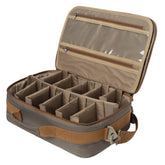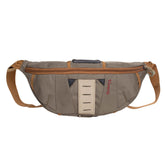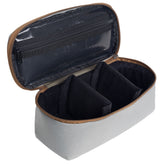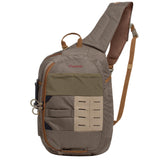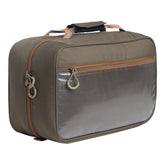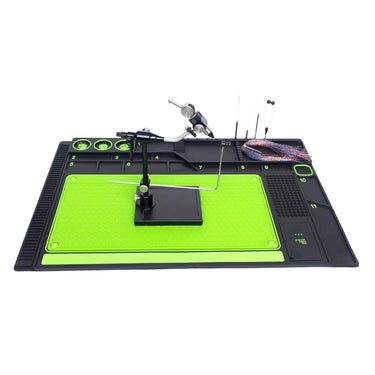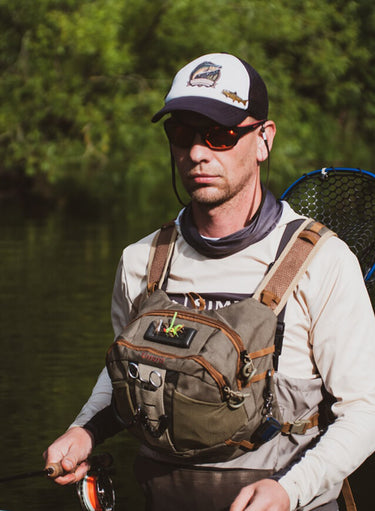Flies: A Comprehensive Guide to Fishing Flies Patterns, Dry vs Wet Flies, and Nymph Options for Bass
Flies are essential tools in the art of fly fishing, designed to mimic the natural food sources of fish. Choosing the right fishing fly pattern can greatly improve your chances of success on the water. Each type of fly serves a specific purpose, from dry flies that float on the surface to wet flies that sink beneath, enabling anglers to target different species in various conditions.

Nymph fishing flies are particularly effective for species that feed just below the surface. I’ve found that understanding the life cycle of aquatic insects helps in selecting the right nymphs, increasing my effectiveness during outings. For those targeting bass, specialized patterns can prove invaluable, as these fish often respond aggressively to both surface presentations and subsurface strategies.
Exploring various fly patterns ultimately enhances one’s angling experience. By experimenting with different flies and techniques, I’ve discovered what works best for me. This journey through the diverse world of fishing flies not only boosts my catch rates but also enriches my appreciation for the sport.
Fundamentals of Fly Fishing
Fly fishing requires a solid understanding of gear and the types of artificial flies used. By mastering these components, I can improve my chances of success on the water.
Understanding Fly Fishing Gear
The fly rod is crucial for casting and controlling the line. I choose a rod that matches the type of fishing I plan to do, considering length, weight, and action. Generally, a longer rod provides better line control and casting distance.
The fly reel is also important for managing the line and fighting fish. I select a reel that balances well with my rod and can hold sufficient backing and line weight.
Leaders and tippets connect the fly to my line. A good leader taper helps with presentation. I often use a 9-foot leader for flexibility. I also pay attention to line types—floating, sinking, or intermediate—to suit the specific fishing conditions.
The Role of Artificial Flies
Choosing the right fly pattern is essential for successful fishing. The main categories include dry flies, wet flies, nymphs, and streamers. Each pattern imitates different stages of aquatic insects or small fish.
Dry flies float on the surface and attract fish like trout by mimicking adult insects. I focus on matching the hatch, selecting flies that resemble local insects.
Wet flies and nymphs are more effective below the surface. Nymphs represent immature insects, while wet flies simulate drowned insects. I adjust my tactics based on the water conditions and fish behavior.
For targeting larger fish, I often use streamers that mimic baitfish. This approach is effective for bass and other predatory species.
By understanding my gear and the role of various flies, I increase my effectiveness and enjoyment in fly fishing.
Fly Patterns and Tying Techniques
In this section, I will explore the differences between dry flies and wet flies, discuss the importance of nymphs in fly fishing, and detail the craft of tying hackled flies. Each of these topics plays a crucial role in creating effective fishing flies.
Dry Flies Versus Wet Flies
Dry flies float on the water's surface, imitating adult insects. I often tie them using materials like hackle fibers and peacock herl. These elements give the fly life and help it mimic the natural movements of insects.
Wet flies submerge and target fish feeding below the surface. They represent nymphs or other aquatic life. When tying wet flies, I prefer to use materials such as transparent threads and different colored bodies to create realistic profiles.
Choosing between dry and wet flies depends on the fishing conditions and the target species. Observing the insects around the water can guide which pattern to select.
Nymphs and Their Significance
Nymphs represent the immature stages of aquatic insects. In my experience, nymph fishing flies can be particularly effective because fish often feed on these abundant life stages. A classic pattern is the Pheasant Tail nymph, known for its simple yet effective presentation.
When tying nymphs, I focus on weight and silhouette, using materials like beads for added weight. Varying the color and size can influence a nymph's effectiveness in different waters.
In fast-moving water, I find heavier nymphs can help maintain contact with the bottom, where fish tend to search for food, increasing my chances of a successful catch.
The Craft of Tying Hackled Flies
Tying hackled flies requires precision and skill. I start with a strong hook and lay a solid foundation using thread. Next, I attach hackle fibers to create a body that promotes movement in the water.
I often use hackle from various sources, ensuring variability in size and color. Adjusting the positioning and density of hackle fibers can result in different buoyancy and visibility.
Streamers, often tied with multiple materials and vibrant colors, benefit greatly from effective hackling. This technique enhances attraction to predatory fish, making them a staple in my fly box. By mastering these tying techniques, I improve the effectiveness of my fishing flies.
Habitats and Fly Selection
Selecting the right flies requires understanding the specific habitats where I fish, as well as the aquatic insects present. I focus on matching my fly patterns to both the environment and the seasonal insect hatches for successful catches.
Matching Flies to Aquatic Insects
In freshwater environments, my success depends on accurately mimicking local aquatic insects. I pay close attention to caddisflies, midges, and stoneflies, as these are common in many streams and lakes.
When choosing my flies, I consider the life stages of these insects. For example, if I observe caddisfly adults hovering above the water, I opt for a dry fly pattern that resembles them. During nymph hatches, I switch to nymph patterns that imitate their underwater larval stages. This alignment between flies and insects generally improves my catch rate.
Choosing Flies for Stillwater Versus Streams
Fishing in stillwaters, like ponds and lakes, requires different tactics than streams. In these calm waters, I often use sinking lines and weighted flies to get below the surface where fish are lurking.
In contrast, when fishing in trout streams, I tend to favor dry flies during hatch times when fish actively feed on the surface. I also adapt my presentation by varying my retrieve speeds according to the water's flow. Each habitat demands specific approaches to fly selection for the best results.
Targeting Specific Fish Species

When targeting specific fish species, the selection of fishing flies is crucial for success. Understanding the preferred prey of each species helps in matching the hatch and selecting the right flies.
Fly Fishing for Bass
For bass, I focus on fishing flies that mimic their primary food sources, such as baitfish and crustaceans. Clouser minnows and deceivers are effective patterns for imitating small fish.
I also incorporate surface flies like poppers and divers to entice aggressive strikes from bass. In clear water, I find using natural colors works best, while brighter colors can be effective in murky conditions.
Key flies for bass:
- Clouser Minnow: Perfect for mimicking baitfish.
- Poppers: Excellent for surface action.
- Crayfish Patterns: Effective during crustacean activity.
Trout and Salmon Fly Selection
When targeting trout and salmon, my fly selection focuses on matching the hatch. I use dry flies during surface feeding times, while nymphs are essential for enticing fish below the surface.
For trout, patterns like Adams and Elk Hair Caddis are top choices when matching emerging insects. For salmon, I prefer larger salmon flies, particularly when targeting them during their spawning runs.
Essential flies for trout and salmon:
- Adams: A classic dry fly for various hatches.
- Elk Hair Caddis: Great for surface feeding trout.
- Intruder and Spey Flies: Effective for salmon, especially in river current.
Selecting the right flies based on targeted species significantly increases the chances of a successful day on the water.



